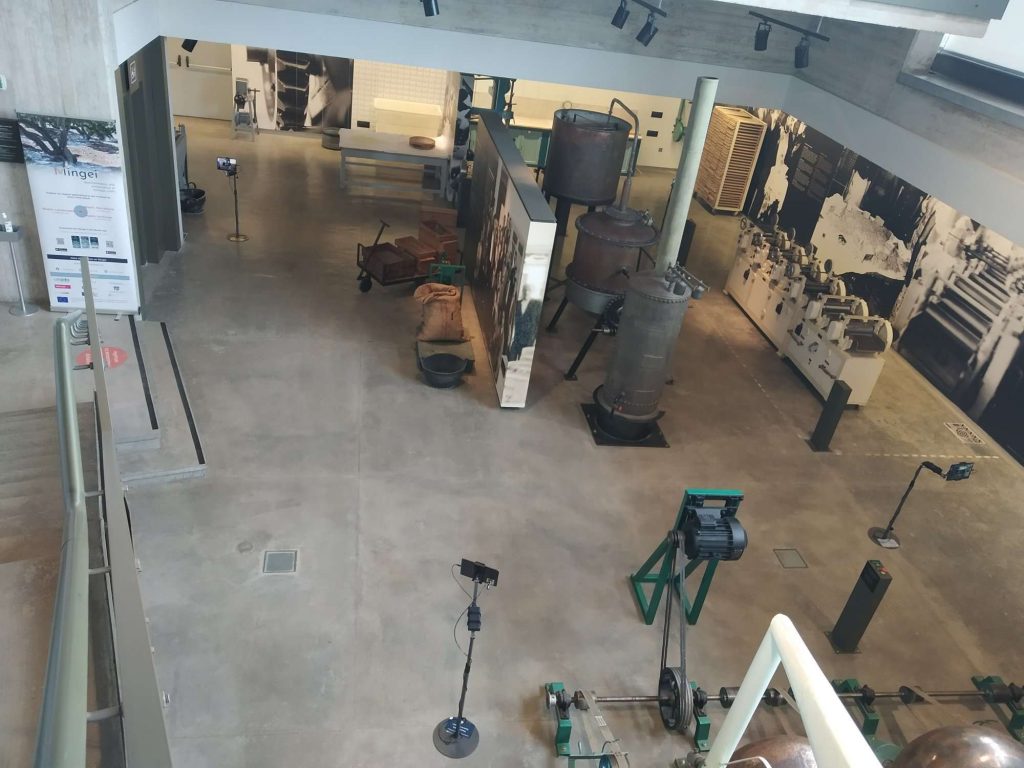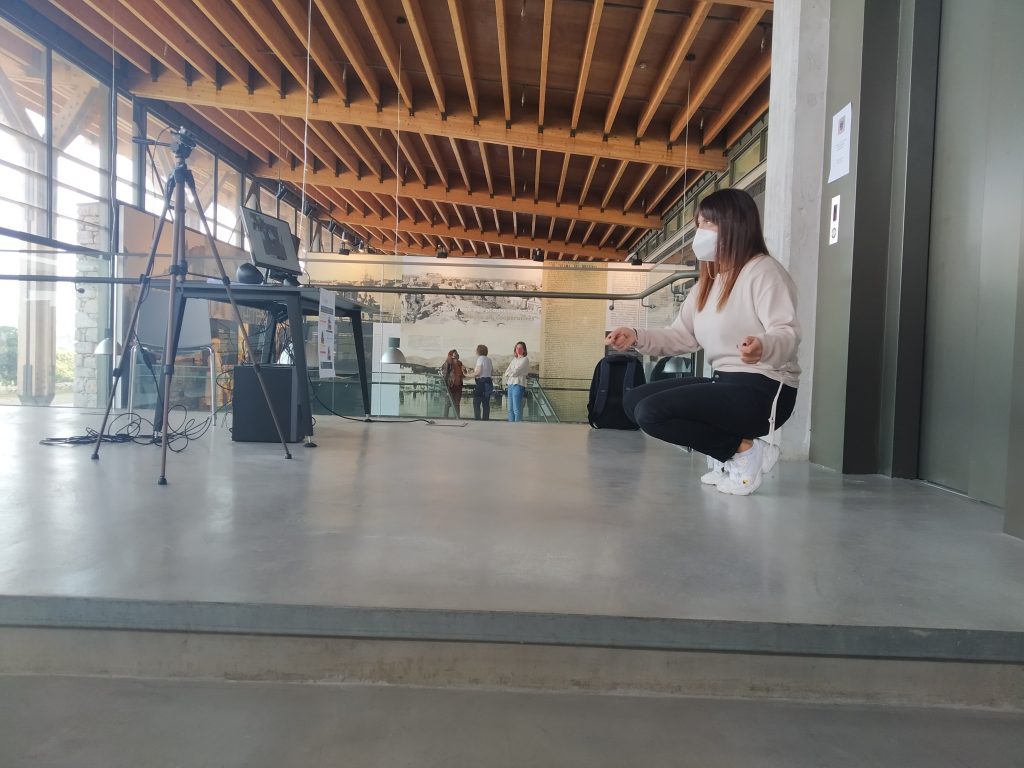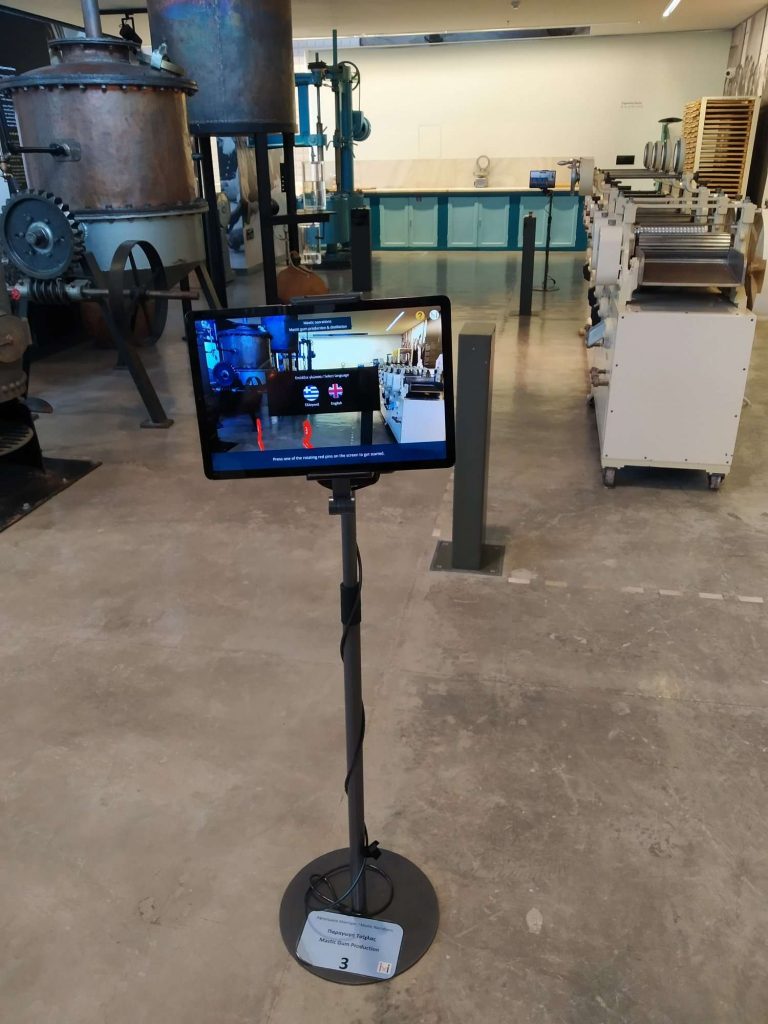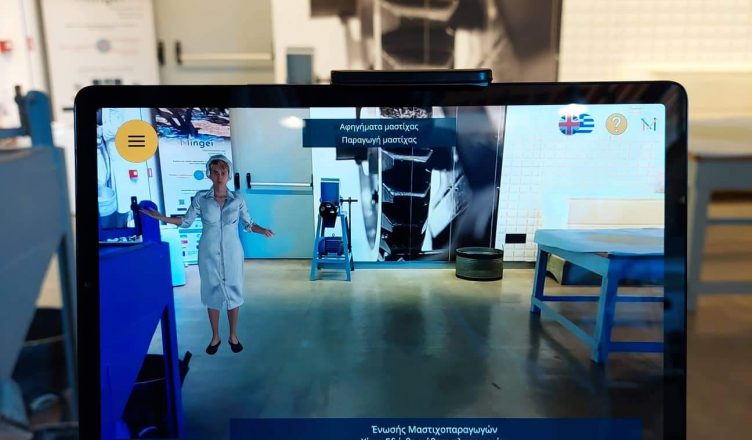Authors: Danae Kaplanidi, Eleana Tasiopoulou, Katerina Ziova, Christodoulos Riggas
The Chios Mastic Museum, located on the Greek island of Chios, is home to the unique craft of mastic cultivation. Here, colleagues from PIOP introduce the three digital applications developed in Mingei and share anecdotes on how visitors have been engaging with these.
The Chios Mastic Museum is housed in a building that was designed exclusively for the purpose of showcasing the traditional craft of mastic cultivation. Its complex is harmoniously embedded in the surrounding landscape. The permanent exhibition centres on the Chios gum mastic as a unique natural product that is produced exclusively in southern Chios, in the Mastichochoria region. Visitors learn about the skinos plant and gum mastic, the resin that was acknowledged as natural medicine in 2015, and discover the traditional crafts know-how of mastic cultivation, which was inscribed in the Representative List of the Intangible Cultural Heritage of Humanity by UNESCO in 2014. Visitors also trace the management of mastic throughout history and understand the way in which it shaped cultural heritage in the agricultural and urban landscapes of southern Chios. They are informed about the function of the cooperatives and the processing of mastic in modern times, which constitutes a significant chapter in the production history of Chios, as well as the uses of mastic today throughout the world. Finally, they come into contact with the plant itself and the natural landscape in which it thrives[1]. PIOP’s goal through Mingei is to enrich the narration of the permanent exhibition with digital applications. The applications developed vary in format but their main aim is to offer further information and experiences to the visitors on gum mastic, the landscape it grows, mastic growers, and industrial processes.
Mastic narrations – virtual humans and real-life stories
The installation consists of four tablet devices located in four main spots in the museum. From each tablet, a specific area of the museum is covered and augmented through the camera of the tablet with virtual ‘hot spots’, each of which tells one or more stories. By selecting the hotspot, a Virtual Human (VH) appears who is the virtual twin of someone who used to work in the factory and operate one of the machines close by. Viewing the hot spot through the tablet camera, the VH appears on the factory floor to narrate its life story, daily life and work at the factory.
The first installation of the application took place in November 2021, during which time we were able to do a brief testing with visitors. Encountering problems with the installation, we decided to demount it, reinstalling an improved version in May 2022. We also had the opportunity to more intensively train the museum professionals on how to run and demonstrate the application.
The application has received positive comments by the visitors so far who mention that it is a nice way to learn about local people’s life. The augmented appearance of a VH in the physical space through the tablet screen has also triggered playful reactions, especially among young visitors who try to place themselves near the VH and take photos.

Mastic gestures – immersive insights into crafts processes
The mastic gestures application provides an immersive experience of a craftsperson’s cultivation actions. It consists of a computer and monitor together with a depth sensor that tracks the user’s actions. The user stands in front of the installation and follows the instructions provided on the screen to mimic specific craft actions.
Having installed the app, we have been able to evaluate how visitors interacted with it. We observed that visitors are getting confused in regard to the instructions of the application, and this is a point we are currently trying to fix. Nevertheless, when they engage with the application and mimic the grower’s gestures, they are especially impressed by the technology. Even mastic growers that have tried the application were astonished by the fact that visitors can experience their work in this way.

Mastic landscapes – exploring from above
The immersive flight simulator Airborne flies over different mastic villages of Chios, giving museum visitors insights into how geographical location and environmental context affect craft practices and their development. During the flyover, users can stop at each village and retrieve multimedia and text information related to those villages. Airborne is installed as a desktop computer set in the multimedia room of the museum. There are two options available: (a) automated tour and (b) flight simulator. The automated tour targets users that wish to explore the mastic villages in a movie-like way while the flight simulator is more gameplay-oriented since users have control of the virtual drone flying on Chios sky and are free to explore information in any way they like. Visitors have shown a special interest in the 3D reconstructions of the mastic villages. Some local people have even tried to find their houses when the drone flies over their village. When we first evaluated the simulator, many visitors pointed out that the content of each village is disproportional; that is, some villages had more text and fewer images while others the other way around. After this evaluation, we worked further on the content and installed an updated version.

Visit the Chios Mastic Museum
The Mingei apps explored above are now part of the museum’s permanent exhibitions. You can explore more about the Mingei protocol used in the digitisation and representation of the craft of mastic cultivation and the objects and processes digitised on the Mingei Open Platform. Finally, if you are in the area or looking for a heritage-filled holiday, visit the museum and explore the craft of mastíc cultivation for yourself!
[1] Kallinikidou, A. (2017) Chios Mastiha Museum. Athens: Piraeus Bank Group Cultural Foundation.

